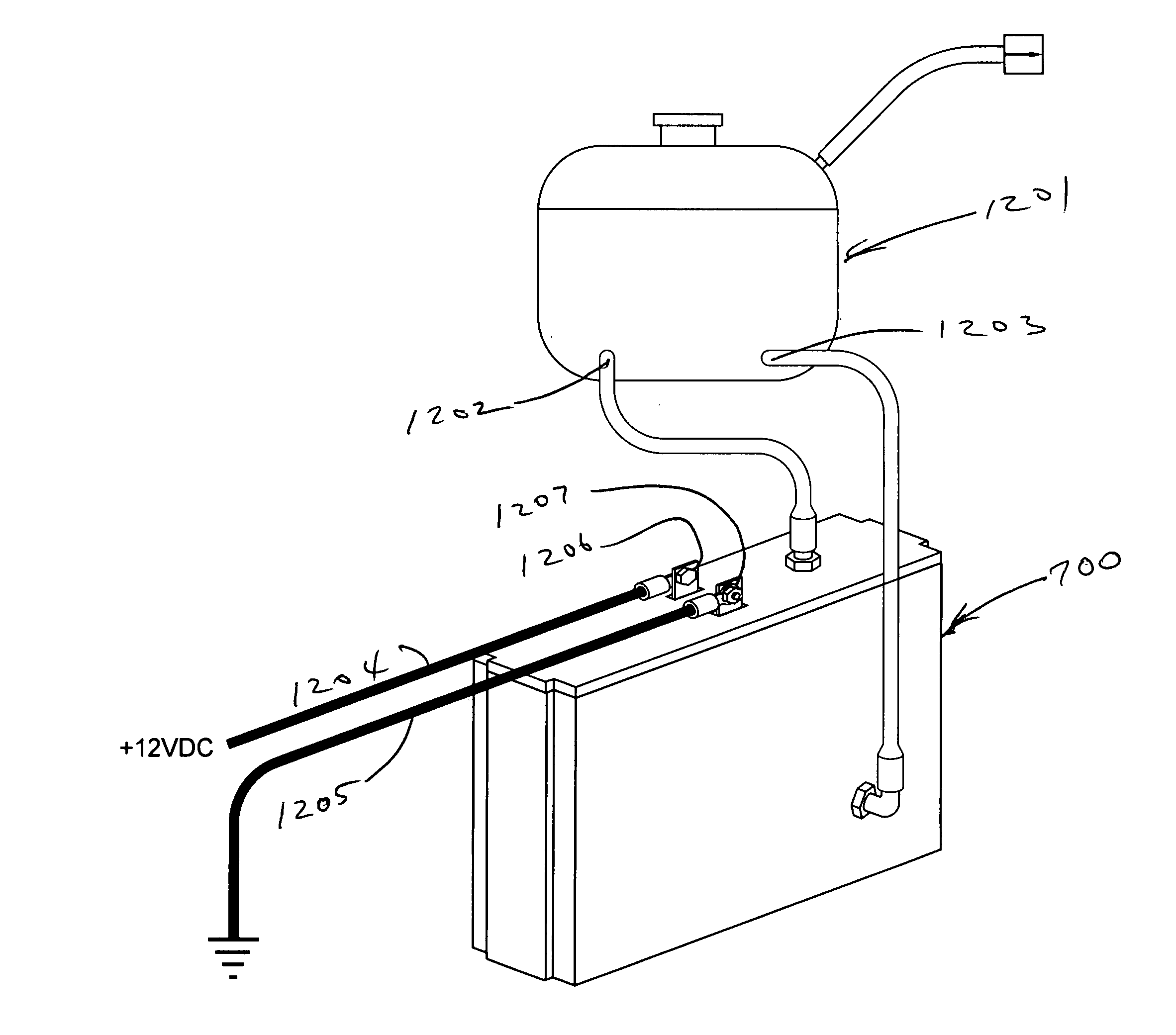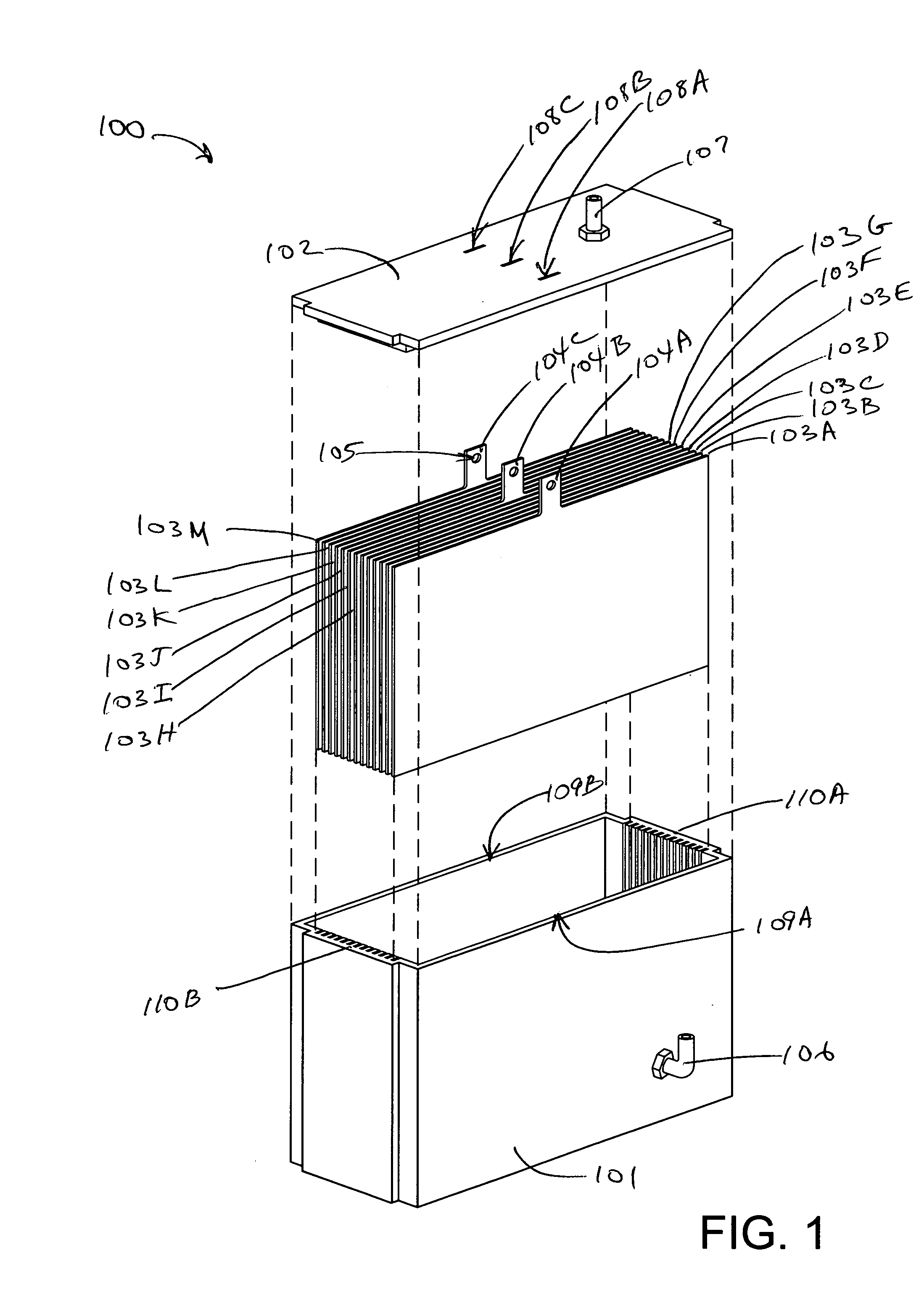Hydrogen and oxygen generator having semi-isolated series cell construction
a technology of hydrogen and oxygen generator and semi-isolated series cell, which is applied in the direction of manufacturing tools, instruments, electric circuits, etc., to achieve the effect of facilitating sealing of the upper edges, minimizing current leakage, and facilitating electrical connections the most easily mad
- Summary
- Abstract
- Description
- Claims
- Application Information
AI Technical Summary
Benefits of technology
Problems solved by technology
Method used
Image
Examples
first embodiment
[0032]Referring now to FIG. 1, a first embodiment electrolysis unit 100 includes a case lower portion 101, a case lid 102, thirteen evenly-spaced, parallel laminar plates 103A-103M (103, generally). It will be noted that laminar plates 103A, 103G and 103M each have an electrical connector tab 104A, 104B and 104C, respectively, which extend from an upper central portion thereof. Each of the three connector tabs has an aperture 105 for receiving a threaded fastener that will secure an electrical cable to the connector tab. Laminar plates 103A and 103M will receive a chassis ground connection, while laminar plate 103G will receive a connection to a nominal voltage of 12VDC. It will be noted that the case lower portion 101 is equipped with an electrolyte inlet 106. It will be further noted that the case lid has a gas outlet 107. It will be further noted that the case lid 102 has three rectangular apertures 108A, 108B and 108C, which fit over the three connector tabs 104A, 104B and 104C,...
second embodiment
[0037]Referring now to FIG. 6, the second embodiment electrolysis unit 400 has been assembled, with the fourteen laminar plates 403A-403N seated within their respective plate receiving slots within the case lower portion 401, the case lid 402 secured to the case lower portion 401, and the outermost-laminar plates 403A and 403N seated and sealed within their respective circumferential grooves, which include their case receiving slots in the case lower portion 401 and the grooves in the case lid 402. A waterproof sealant, such as polyurethane adhesive / sealant may be used successfully to seal the case lid 402 to the case lower portion 401 and to seal the outermost laminar plates 403A and 403N within their respective circumferential grooves. As previously indicated, laminar plates 403A and 403N will also be connected to chassis ground through conductors 405A and 405B, respectively. Likewise, connector tabs 404A and 404B are interconnected by a threaded connector stud 601, which is also ...
fourth embodiment
[0042]Referring now to FIG. 11, the fully assembled fourth embodiment electrolyzer unit is shown.
PUM
| Property | Measurement | Unit |
|---|---|---|
| Electric potential / voltage | aaaaa | aaaaa |
| Level | aaaaa | aaaaa |
| Corrosion resistance | aaaaa | aaaaa |
Abstract
Description
Claims
Application Information
 Login to View More
Login to View More - R&D
- Intellectual Property
- Life Sciences
- Materials
- Tech Scout
- Unparalleled Data Quality
- Higher Quality Content
- 60% Fewer Hallucinations
Browse by: Latest US Patents, China's latest patents, Technical Efficacy Thesaurus, Application Domain, Technology Topic, Popular Technical Reports.
© 2025 PatSnap. All rights reserved.Legal|Privacy policy|Modern Slavery Act Transparency Statement|Sitemap|About US| Contact US: help@patsnap.com



